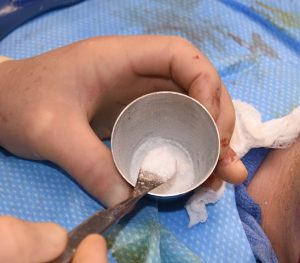The development of postoperative infection is the main medical risk in most implant type surgeries. While the superior vascular supply to the face allows a lower risk of infection of implant placements in the face than in body implants, these procedures are still not infection free. This is particularly relevant when facial implants are placed partially or fully through intraoral incisions. Unlike external skin incisions intraoral incision sites can never be made completely sterile due to the mucosal lining and the proximity of the teeth which have bacteria in their gingival sulcuses.
As a result facial implants that are placed through intraoral incisions have a higher risk of infection than those placed through skin incisions. In some cases patient may have options as to whether they prefer an intraoral vs an external incisional implant placement method. (e.g., chin and cheek implants) But in certain facial implants (e.g., jaw angle implants, custom jawline implants) using an intraoral for part or all of their placements is unavoidable.
For any facial implant in which an intraoral approach is used, there are a variety of intra- and postoperative precautions taken to lower the infection risk as much as possible. Most of these steps revolve around the use of antibiotics. In surgery antibiotic solutions are used to wash the implant and the tissue pocket along with IV antibiotics which are combined with postoperative oral antibiotic medications.


When it comes to infection prevention around implants every strategy possible needs to be employed as no one single step is universally successful. Getting the highest load of antibiotic around the implant by placing it directly into it is useful particularly in the higher risk intraoral implant placements.
Dr. Barry Eppley
Indianapolis, Indiana




